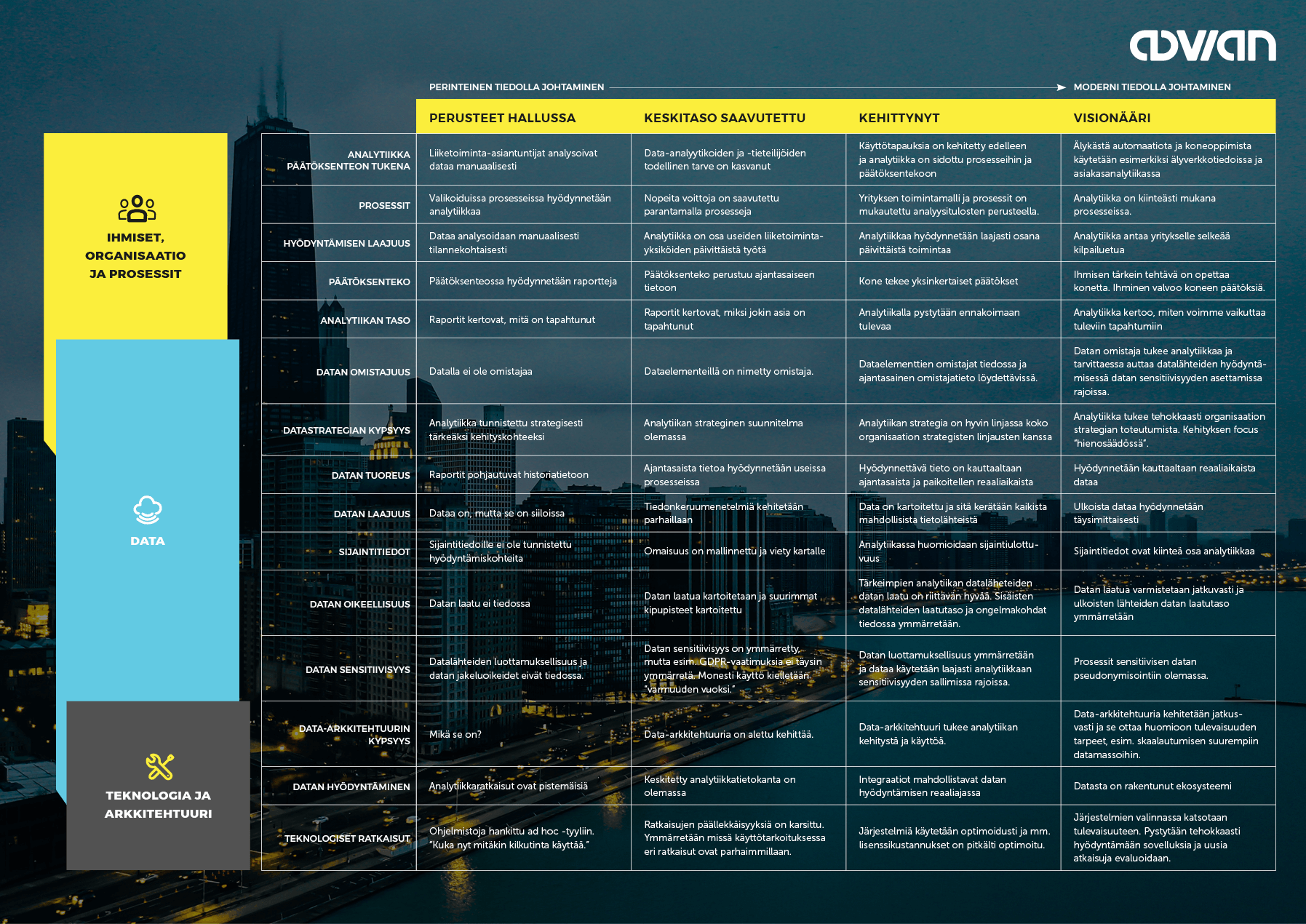The problem with AI
There is a big problem with AI, and it is the return on investment.
Just look at recent reports or studies – usually AI has not been able to achieve the expectations companies have set, and because of this ROI has been zero or even negative. For example, a study by PwC showed that 76% of organizations are barely breaking even on their AI investments. And only 6% had scaled AI across the entire organization.
What are the reasons behind these miscalculated ROIs? What are the best practices of calculating ROI for AI in industrial production? How can you find use cases more likely to bring in good return on investment?
To avoid speaking too broadly and grouping all type AI together, I will take a closer look on Edge AI investments in industrial production settings.
Why Edge AI?
Edge AI provides a solution for the ever-growing amount of data in manufacturing and process industries. For example, Gartner predicts that by 2025 as much as 75 percent of all enterprise generated data will be analyzed outside the traditional data centers or cloud. Grand View Research estimates that the total global edge computing market will grow 37 percent per year and will be worth $ 43.4 billion by 2027.
In practice, Edge AI is a combination of Edge Computing and Artificial Intelligence. Algorithms are processed locally, either directly on the machines on the production line or on the nearby server. The algorithms utilize the data generated by the machines themselves, gathered with different sensors. This way, machines can make independent decisions in a matter of milliseconds without having to connect to the Internet nor the cloud.
And when it comes to ROI, Edge AI also has an advantage to other type of AI. Use cases are often more concrete, because Edge AI solutions are installed at a certain point of the production process. Edge AI cases relate directly to the ground level production, and the value of the solution is easy to measure. The goals are particular and detailed, compared to common AI goals such as improving customer experience or customer service.
Why is it important to define ROI for AI?
All the hype has caused a wrong type of thinking when it comes to AI projects – that they are supposedly so different compared to other IT or improvement projects.
By principle, AI projects are aimed to make your business better, just as any other project you initiate. Investing in AI is no different from investing in a new ERP system or a new plant. AI projects need to have a reasonable payback period and they should bring in a return on investment – otherwise it really doesn’t make sense.
Don’t just follow the crowd.
The most profitable ideas are contrarian ideas. This is well understood by financial experts. If your investment is based on the argument “others are doing this too”, then you are destined to be average. We all fall for this sometimes, but if your competitors are doing exactly what you are doing, you have no advantage.
Just see what happened because of the IoT trend – everyone started to gather loads of data, which lead to a situation we are now: 80% of the data gathered by industrial organizations just lay around in a data warehouse, unused. Companies invested huge amounts in gathering and storing data but didn’t really think through what to do with it.
So please, do not back your AI investments with the argument that this is what everybody else is doing.
The better question to ask is: how will this improve my business? By really putting effort to your business case calculations, your project will bring in some actual value. It also becomes easier to justify your next project.
Struggling with ROI - the common mistakes
The challenge is the fact that many organizations struggle to define ROI for AI in the first place.
One of the underlying problems is that the whole discussion about AI is still too general and vague. You hear arguments such as “this improves the customer experience” or “AI makes us more efficient” – yeah, sounds nice.
You can only safely estimate ROI, when your starting point is practical and concrete – what is the actual value on a ground level that AI brings. It needs to be something you can measure, and you need to have a clear end goal in mind.
Defining costs
Often organizations don’t know the costs of their current business, and where the costs come from. I’m not saying this is the problem with everyone. Some companies can accurately tell that their waste percentage is 0,9 %, which costs them 15 million per year.
But this level of knowledge is not common. Especially the “multiplier effect” is often forgotten. For example, let’s say you make motors. At some point, a wrong flywheel is installed, and it isn’t noticed until you are making final checks. How much do these types of errors really cost you? If you cannot draw accurate numbers, it is hard to define ROI.
Of course, there are some costs that are hard to assess – such as damage on brand image caused by faulty products.
Defining profits
One of the most common mistakes people make when calculating ROI is overestimating profits. Expected returns are not based on sound calculations. The benefits need to be determined case by case. You just can’t make general statements about AI saving up to 30 % in costs.
Let’s go back to the flywheel example. We want to decrease the amount of incorrectly installed parts by 90 %.
We still need to know, how much does a single installation gone wrong cost us. Is it 20 minutes extra work? Now we are talking about a few 100 euros.
Or does it take us a day to dismantle and two days to reassemble the motor? Now we are talking about a single mistake causing us a ton of extra work, new parts, and repairs. This might also slow down other production. The price tag just went up.
Without the real numbers on the table, you end up focusing on the cost of the AI implementation, when in reality the solution would pay itself back in a few months.
Best practices to calculate and ensure good ROI
The world is filled with all kinds of ROI templates. Just ask you CFO and they will give you a form.
However, here are a few things to consider if you want to arrive on a good estimate and ensure good ROI for your projects.
1. Look at the big picture and study your process as a whole
First, you need a crystal-clear picture in your head of what problem you are solving and what you are trying to achieve.
To succeed, you need a profound understanding of your business and processes combined with a deep technological knowledge. This means you might not be able to do all this on your own, but you need a qualified partner to look at the technology side.
Get familiar with our own data. Checking how many returns and refunds customers make monthly, how much time is spent at each process stage, or are there any recurrent quality issues, are a good place to start. Even if you end up not investing in AI, there is value in knowing your data and understanding your processes better.
2. Get a good understanding of both costs and profits
Think about the return side of things holistically. AI can bring value by decreasing the need for manual work, making the use of materials more efficient by decreasing waste, improving work safety, reducing sick leaves, decreasing throughput time, decreasing maintenance costs, or improving quality control by decreasing the number of faulty products. You get the point.
Sometimes it is a good idea to bring in a partner to talk about benefits of AI. They can also inform you if your problem is not best solved with AI but with something else. AI is not always the solution.
Costs are easier to get together, but don’t forget to consider the recurring maintenance and service costs. Also, take “soft” costs into account, such as costs of developing the in-house expertise and needed learning.
3. Measure and analyze
You need to systematically measure what you are doing by setting KPIs. Do this before implementing the solution, so you get an understanding of the baseline you are trying to improve.
4. Avoid unwanted surprises
Avoid unpleasant surprises by considering the privacy and security side of the solution beforehand. For example, you should check that the solution doesn’t invade your employee’s privacy, and that the solution is secure enough to sustain hacking attempts. Any automation increases the risk for attacks.
5. Pick the right partner
To ensure good ROI, choosing a capable supplier is important.
Your supplier should have proven industry knowledge. Then you get to have a deeper conversation about your industry’s common problems and avoid the situation, where the other talks about business and the other talks about technology. If you supplier or partner has not worked and created solutions in your industry before, most likely the result is not optimal. The learning curve is just too long.
When we talk about Edge AI, supplier should also be skilled in utilizing various types of sensors, cameras and scanning technologies and applying them in different scenarios.
The third thing to look for is the ability for quick piloting. You should not try to solve everything at once but install the solution on one production line and then adjust it. This way, you can validate your business case and see if there are any uncertainties in the ROI calculations.
6. You don’t have to reinvent the wheel
Deployment of AI doesn’t require massive projects.
These days it doesn’t make a lot of sense to develop your own models. There are a lot of good models out there that can be modified, so you don’t need to start from scratch. This saves both time and money. As long as the supplier knows how to utilize existing models and solutions efficiently, you will get to production quite quickly.
How to choose the best use case?
One of the main obstacles to AI adoption, especially in the early evaluation stages, is the difficulty of selecting the right business use case.
Edge AI has almost no limits when it comes to potential use cases. In the industrial production context, they can be roughly divided into three categories: quality assurance, production optimization, and preventive maintenance. To give you an idea, here are some examples:
- Identifying product by imaging it's features against 3D drawings prior to assembly
- Automatic categorizing of products by surface quality
- Automated non-destructive testing
- Finding defects from the product surface
- Analyzing materials based on the chemical composition
- Identifying missing or faulty parts prior assembly
-
Failure prediction: Analyse incoming equipment data to predict potential failures and to reduce costs
The rule of thumb is that projects should deliver results as quickly as possible.
The answer to which use case to choose can be found from your ROI calculations. Low hanging fruits are one place to start – these are the most obvious fixes you can achieve with AI that start yielding returns already in a few months.
However, every company is unique, and you must evaluate most profitable use cases based on your situation. This is a question of strategy.
If you are operating on a heavily competitive market, where you also need to compete with prices, then you might want to focus on improving your “weaknesses”. Focus on places in your processes where waste occurs, for example.
And the other way, if your strategy is focused on differentiating from competitors with new products and to grow fast, you should focus on your strengths, and use AI to develop even better products. This might cost you more at first, but it will prove itself useful in the long run.
Do you have a use case in mind you would like
to make happen?
Let us tackle your business challenge! Below you can book
a discussion with our experts. 👇

Learn more about our Smart Factory solutions
Smart Factory enables intelligent automation of your factory.

Topics: Ai, Edge Analytics, Advanced Analytics, Machine Learning, Edge AI, Manufacturing, Smart Factory, Leadership, Process Industry













